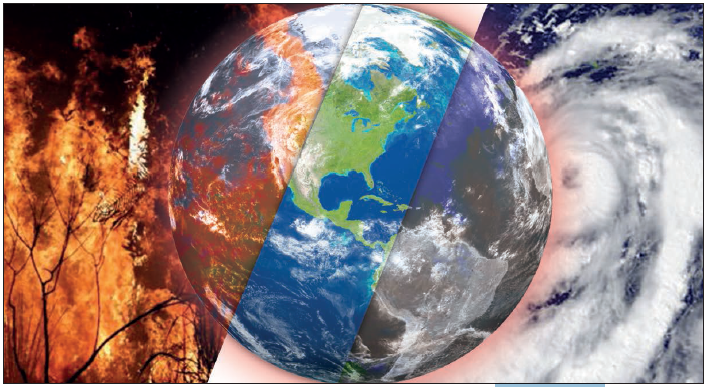WHILE the international debate on Climate Change is on-going , it seems that Climate Change is already creeping up on planet Earth. The changing weather patterns of extreme temperature rises and droughts in some parts of the world with extremes of storms and rainfall in other parts are creating havoc in some countries and communities around the world.
Myanmar has been particularly hard hit recently by the emerging weather patterns. Parts of Myanmar have suffered heavy rainfalls while other parts have suffered rising temperatures and droughts. Myanmar’s main rivers flow North to South and the multitude of rivulets big and small, flow into the main rivers criss-crossing the whole country. There has been much water flowing into these rivers due to heavy rainfall in most areas. These water resources are a boon for agriculture at normal times but poses grave danger to human settlements and even to agriculture when climate and the weather plays havoc with them. With the heavy rains, rivers are swollen and the water level sometimes exceeds the danger point. Many dams on the major rivers are at the point of overflowing with the excess water flowing through the spillways in large volumes, sometimes threatening to flood and even wash away the human settlements downstream.
One thing that climate change reminds us is that we should think deeply before we decide to utilize our water resources to harness it in a big way for the generation of electric power. Dams, the bigger they are, the more prone to failures they would be in times of really heavy rain falls and floods. Unpredictable natural disasters like earth quakes compounding the floods may trigger Dam failures.
Then there are the landslides caused on the slopes of hill sides by top soil, earth and debris flowing down because the downward gravitational pull exceeds the forces retaining such material on the slope. Hence the steeper the slope the more likely it is to be prone to landsides. Landslides may occur due to many causes including during heavy rain, large amounts of rain water seeping into the ground thus increasing water absorption of the top soil. Particularly in the absence of enough large trees, the roots of which usually go deep down and helps to anchor the topsoil to the harder substrate, the seeping water can cause the top soil to gain weight and “slide down” taking away with it everything in its path, including human settlements. Perhaps designing drainage systems on vulnerable parts of the hill slopes concerned, to cause the excess water to be preserved in “ holding tanks” or carried down harmlessly, would be a likely solution.
The other type of “landslide” happens on the mountains where the water seeping into the rocks cause the “not so well anchored” rocks to break loose and slide down resulting in landslides to often block the mountain roads , disrupting traffic, and the flow of goods and services to the towns and villages connected by the roads. In such cases the steeper slopes along the roadways could perhaps, be better reinforced to prevent landslides. Of course the road engineers would be aware of such measures.
The banks of the rivers that are eroded by the swift flow of water causes houses and structures near the water’s edge to be swept away along with the inhabitants if they are not warned of such danger in advance. The process is natural and is in fact normally responsible for the building up of the delta regions at the entrance to the sea of all big rivers. Climate change and the flooding of rivers only hasten the process. One way to avoid destruction and displacement due to river bank erosion is to build habitats and structure some distance from the banks. Trying to re-enforce embankments in vulnerable points all along the river, except for preserving Pagodas and Cultural Heritage Structures, would be a very costly process. In fact the natural widening of the big rivers is largely due to the river bank erosion process.
Climate Change “Pundits” foresee a gradual rise in the sea level due to the melting of ice masses in the “icy regions of the world.” May be some decades down the line, if such a scenario becomes a reality, some coastal cities of Myanmar including Yangon, will be at risk of being “on water”. Perhaps the City planners should take such a dire prediction into account in planning the expansion of Yangon City.
Unless the effects of Climate Change can be mitigated, there is no telling what the future holds for mankind. Humans can harness nature when it is tame and mild but can never control nature when it chooses to go wild.
By Lokethar


